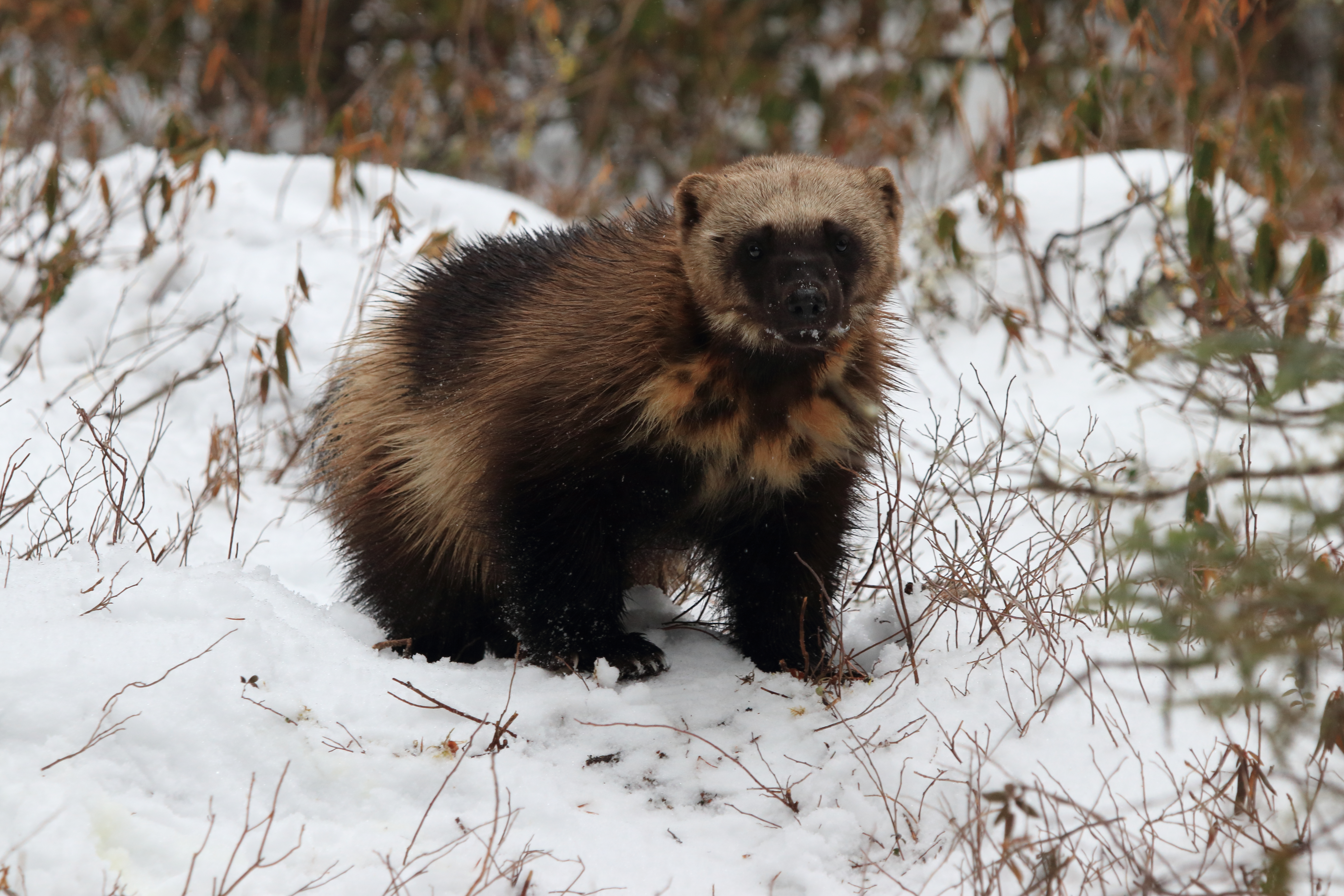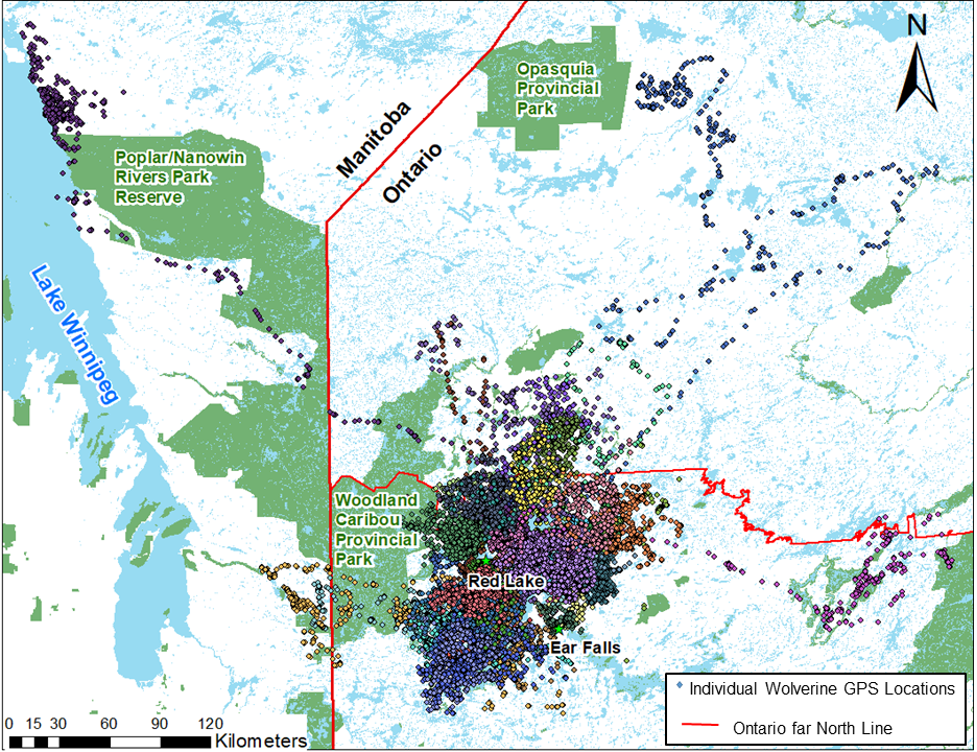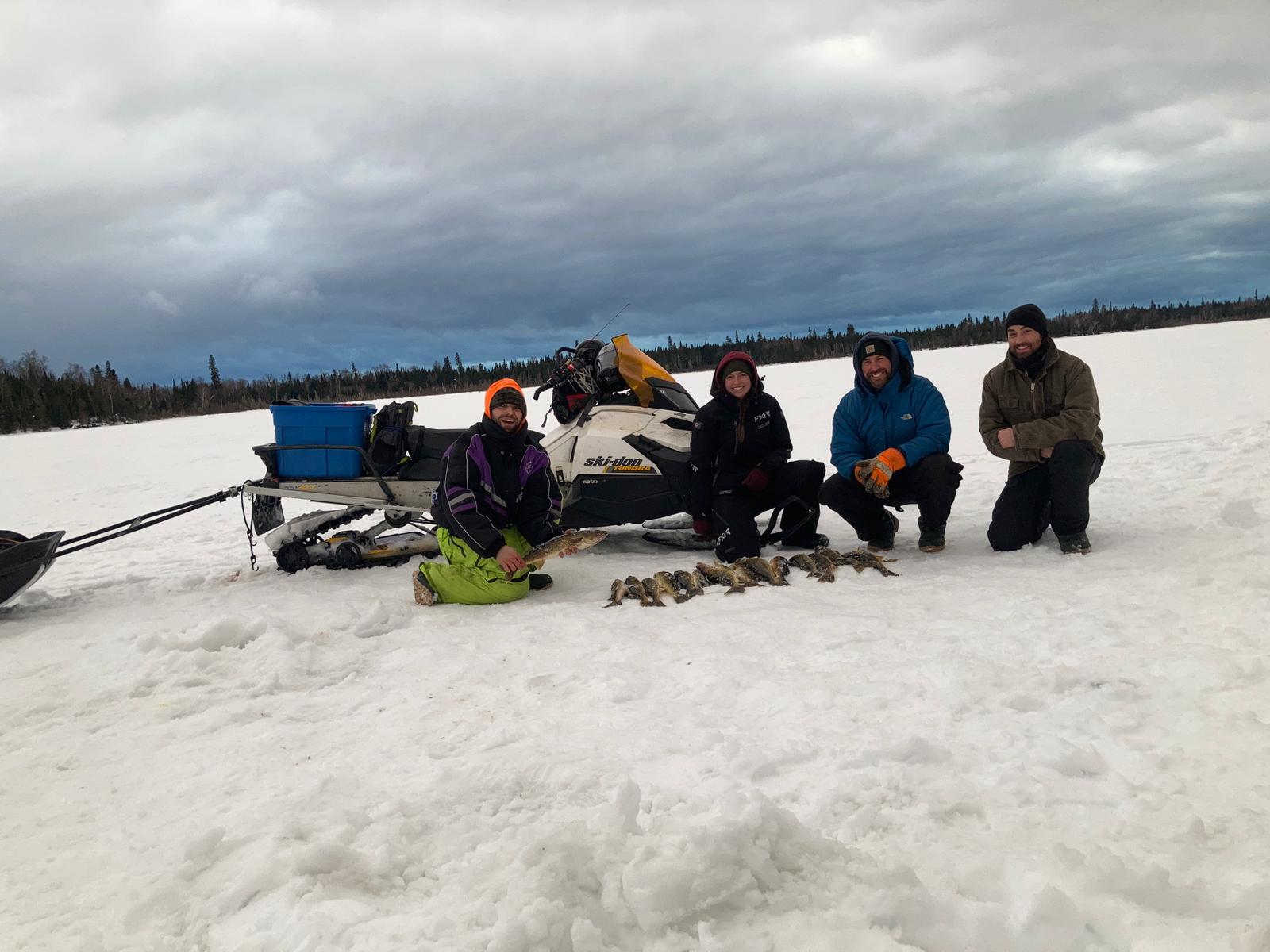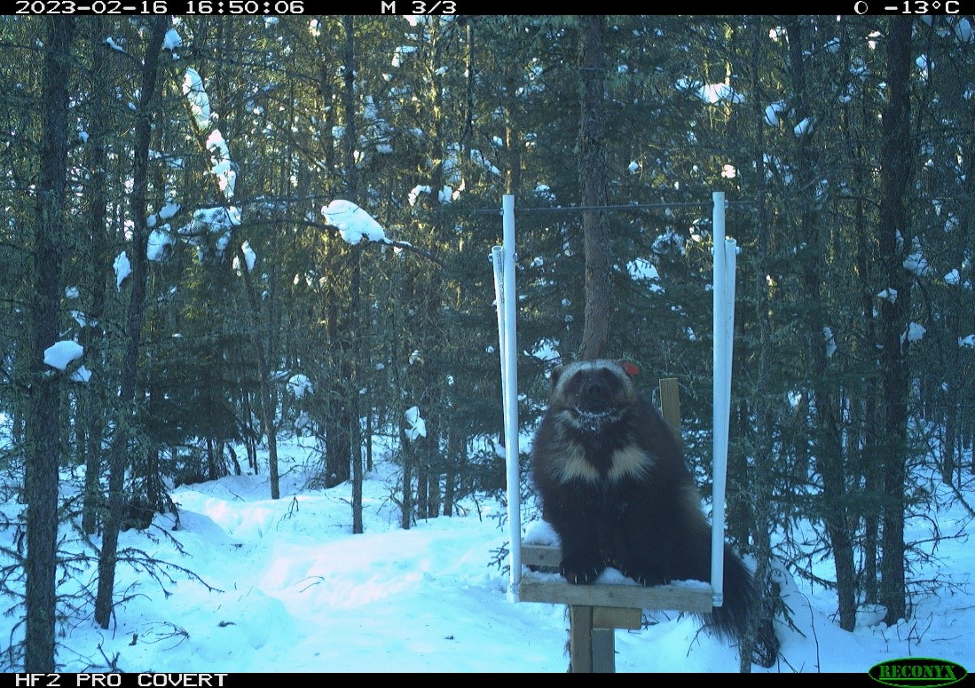Wolverine
Wolverines were once found across much of southern Canada, but a combination of over harvest and habitat loss has left them inhabiting only largely inaccessible northern and alpine areas. Wolverines are slow to reproduce and have large territories, which makes them especially vulnerable to habitat loss and disturbance from resource-extraction activities. Keeping wild areas intact is therefore of vital importance to wolverines.
Wolverines are both predators and scavengers with sharp teeth and powerful jaws enabling them to gnaw and tear through frozen meat and bones. With their thick, frost-resistant coat and large, snowshoe-like feet, wolverines are ideally adapted to live in northern environments. But these traits also make them vulnerable to climate change, especially a lack of deep snow cover for insulating dens.
Wolverines, like caribou, are an excellent indicator of the general health of wild ecosystems. Because they need large areas of intact habitat, wolverine presence tells us that a wild area remains large and connected, vital attributes for helping wildlife adapt to climate change.
Managing wolverine habitats and populations existing with industrial disturbance
Wolverine habitats in Canada are being developed for mining, forestry, and petroleum extraction. Associated infrastructure and disturbances can degrade wolverine habitat quality and increase their mortality. For these reasons and more, wolverines are listed as a species of Special Concern in Canada (COSEWIC 2014) and as Threatened in Ontario (Endangered Species Act 2007). Many provinces are managing wolverine populations with limited information on their distribution or abundance; this is particularly true in the boreal forest where wolverines are relatively understudied. The WCS Canada wolverine research team is conducting field research to help update the population status of wolverines in Alberta and Ontario and to better learn how wolverines respond to human disturbances.

Female wolverine (photo credit: Liam Cowan)
Assessing wolverine populations and their response to human disturbance
Our main research focus is in the Ontario Northern Boreal which is home to the easternmost population of wolverines in North America. WCS Canada led a seven-winter survey effort to better understand where wolverines are – and aren’t – in the region. WCS Canada also led a wolverine radiotelemetry study in Red Lake, Ontario from 2003–2005 and was a major partner in a similar wolverine radiotelemetry study in northern Alberta from 2013–2016.
We reestablished a field program in Ontario and, over five winters between 2018 and 2022, collared and tracked 53 wolverines to understand abundance, habitat selection, denning, survival, and foraging. We have similar data from 44 wolverines in northwestern Alberta between 2013 and 2016. Between these two field sites we have collected 120,000 GPS relocations, documented 22 wolverine mortalities, 255 foraging sites, and 18 den sites.

A map of the 65,000 GPS locations collected from 47 collared wolverines around Red Lake, Ontario between 2018 and 2022. Different colours represent individual wolverines, and each point is a GPS location from one of their collars. The wolverines who displayed dispersal or exploratory movements are easily seen here.
We are using these data in the following research projects and policy initiatives:
- Determining wolverine abundance in northwestern Alberta and northwestern Ontario using mark-recapture datasets with over 130 individual wolverines photographed and live trapped.
- Describing the denning ecology of boreal wolverines and providing information to update policies protecting den sites.
- Assessing the efficacy of wildlife identification using photographs of tracks in the snow (in collaboration with Cascades Wolverine Project).
- Sequencing the wolverine genome and applying the genome to conservation issues (in collaboration with SickKids [Hospital for Sick Children, Toronto, ON] and University of Idaho).
- Assessing the efficacy of using scat for monitoring the reproductive status of wolverine populations (in collaboration with the Toronto Zoo).
- Assessing wolverine stress response to human disturbance (in collaboration with the Toronto Zoo and University of Toronto).
- Range-wide comparison of wolverine stress hormones (in collaboration with the Toronto Zoo, University of Toronto and Government of Nunavut).
- Documenting the spatial and temporal characteristics of wolverine harvest refugia in Manitoba and Ontario (in collaboration with the Government of Manitoba).
- Determining the applicability of caribou habitat policies in protecting wolverine habitats (in collaboration with Wilfred-Laurier University).
- Investigating forestry road decommissioning and its effectiveness in reducing use by wildlife and people.

WCS Canada's Wolverine team getting ready for their field research trip.
Working with Communities
Our program works closely with Indigenous and local communities. Members of the public interested in wildlife conservation and fur trappers are active participants in our field research, lending their fine-tuned local knowledge as “eyes and ears of the bush”. See this blog which discusses some of our work with trappers (Muddy Boots Blog: Unlikely allies work together to save wolverines ). We also work with students to help train the next generation of conservationists and conservation enthusiasts. We have assisted students from Aroland First Nation in building and operating wolverine run poles near their community. Students from Matawa First Nations took field trips to our site to learn about methods in ecological research. Students from Red Lake High School built and maintained run poles for our study and used the data in their science reports.

Run poles place wolverines in optimal position for camera.